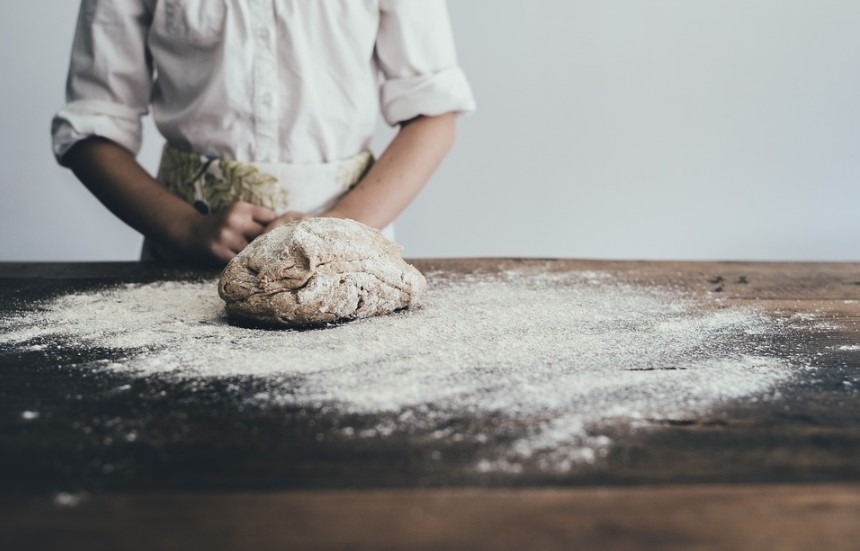Don’t you know that yeasts are living organisms? Yes, and they are mostly single-celled organisms belonging to the fungus kingdom. There are more than 1,500 identified strains of yeast, and one particular species is called Saccharomyces cerevisiae, which needs food, warmth, and moisture to thrive.
Yeasts are universal. They can be found in soils and on plant surfaces and are especially abundant in sugary mediums such as flower nectar and fruits. There are hundreds of economically significant varieties of ascomycete yeasts, the types commonly used in bread, beer, and wine production.
It is also commonly used in bread making and brewing beers. It converts its food—sugar and starch—through fermentation, into carbon dioxide and alcohol. Carbon dioxide makes baked goods rise.
Under the microscope, which is the only way to see yeasts, you will see an egg-shaped organism.
20,000,000,000 (twenty billion) yeast cells would be weighing only one gram. To grow, yeast cells digest food, and this allows them to obtain energy.
How does yeast work in baking?
In baking yeast-leavened bread, the yeast or the “sugar-eating fungus” ferments the flour’s sugars and releases carbon dioxide. The carbon dioxide bubbles have nowhere to escape because the dough is elastic and stretchable, causing the dough to rise or inflate. Meanwhile, the alcohol evaporates, transforming into gas that also contributes to the rise of the bread. The alcohol and the acids produced during the fermentation process, impart that wonderful flavor and aroma associated with yeast-leavened bread.
The men behind the discovery of the yeast
The art of bread making has started even in ancient times and has now evolved into a huge industry. But the science of bread making didn’t develop until 1676 when Anton Van Leeuwenhoek developed the first microscope that studied yeast, which is the primary ingredient in bread making and can only be seen through a microscope.
Leeuwenhoek found out that the yeast consists of globules floating in a fluid. At first, he thought that they were merely the starchy particles of the grain from which the wort (liquid obtained from the brewing of whiskey and beer) was made.
In 1755, the Dictionary of the English Language by Samuel Johnson defined yeast as “the ferment put into a drink to make it work; and into bread to lighten and swell it.” It was not yet used in baking or bread making, and nobody believed that they were alive; they were seen as just organic chemical agents required for fermentation.
In 1859, French chemist, Louis Pasteur first discovered how yeast works, and our modern understanding of the fermentation came from his findings. It was Pasteur who initially demonstrated through his experiments that fermented beverages result from the action of living yeast transforming glucose into ethanol.
Other scientists and men doing researches in the brewing industry accepted the conclusions reached by Theodor Schwann and others, 20 years earlier, that yeast was a living organism.
Accordingly, biologists began to take over the study of fermentation from chemists. However, there was still some confusion and controversy regarding yeast’s biological nature and its role in fermentation. Despite the results of many experiments, notably those of Schröder and von Dusch70, some most influential scientists believe that living microbes did not cause the fermentation and putrefaction.
However, Pasteur demonstrated that the microorganisms cause the conversion of sugar into alcohol from grape juice’ He also concluded that fermentation is a vital process. He defined it as respiration without air.
Fleischmann’s® Yeast was founded nine years after Pasteur’s discovery and led to the modern baking era’s birth.
The baking industry started In Egypt
Archeologists found grinding stones and baking chambers, as well as drawings of 4,000-year-old bakeries and breweries. Research also supports that ancient Egypt was the home of modern bread.
During this time, Bakers had used different grains to create a variety of flavors in their bread. Wheat made excellent loaves, and it was an abundant grain in Egypt.
Bakers began experimenting with using different ingredients such as honey, eggs, dates, seeds, and spices to make tastier bread. They were added to provide a welcome and delicious variety of choices. To make the bread appear artistic and as part of some rituals and festivals, they shape them like birds, fish, and cows.
Typically bread was purposely made for daily consumption and some special festivals, and rituals and the tradition continues with particular holiday animal-shaped bread.
Related Links:
https://redstaryeast.com/science-yeast/what-is-yeast/
https://www.eater.com/2020/4/8/21212699/what-is-yeast-baking-bread-explainer
